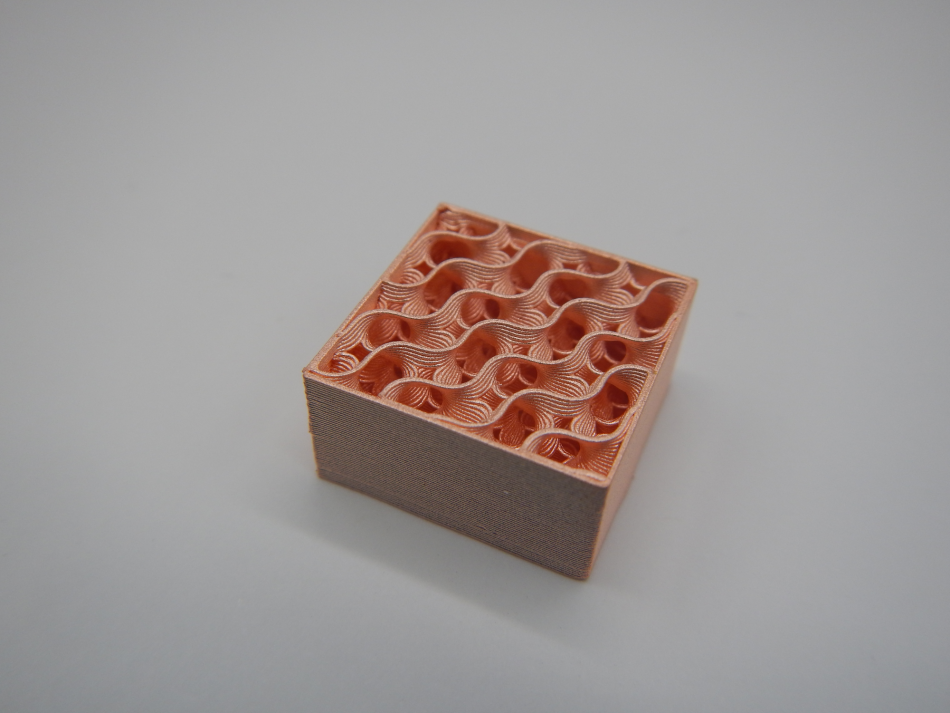Compact heat exchangers, which transfer heat from one medium to another, have many and varied applications. From air handling units over energy conversion systems to cooling micro and power electronics. However, both in terms of energy efficiency and the way they are designed and manufactured, there are still many profits to be made. That is precisely the ambition of the IAMHEX project, which uses innovative design software and 3D printing, among others, to realise those profits.
In terms of the energy efficiency of compact heat exchangers, i.e. the transfer of heat from one medium to another, there is still room for improvement, roughly estimated at 15 to 30 per cent. This can be done without making the heat exchanger larger or increasing the pressure difference (pressure drop), which is not desirable for most applications. At least, those efficiency benefits are possible in theory, because actually realising them is not immediately obvious. This is because heat exchangers, even compact ones, are still mostly produced using classical methods based on mechanical production techniques. This limits the design freedom of, for example, the crucial fin structures that increase the surface area for transferring thermal energy inside the heat exchanger. The design of heat exchangers can also be improved. Detailed simulations based on numerical methods can be too time-consuming and expensive, and can lead to designs that are not manufacturable. Heuristic (problem-solving) models, on the other hand, can improve the design phase but only in certain circumstances.
Energy and materials research
The design freedom becomes much greater when 3D printing is used instead of classical production methods. It is one of the strategies used to study the optimisation of compact heat exchangers within the IAMHEX project. The three-year project coordinated by KU Leuven started in January 2022 and is funded from VLAIO. It involves broad basic research carried out within the intercluster collaboration, which means that several scientific disciplines are involved, in this case energy and materials research. From both project partners - KU Leuven and VITO - both energy experts (EnergyVille) and materials experts are therefore participating in the project. The project is part of the Flemish energy cluster Flux50 and the materials cluster SIM Flanders.
The project focuses on additive manufacturing via 3D printing with copper and aluminium. Printing is done using two different techniques: Laser Powder Bed Fusion, in which KU Leuven specialises, and 3D micro-extrusion, in which VITO is versed. 'Both techniques have their advantages and disadvantages,' says Johan Van Bael of VITO/EnergyVille. In the former, the powdered metal is melted by laser light. With the latter, printing is done with a viscous paste filled with metal powder (e.g. copper or aluminium alloys), after which thermal treatment follows and virtually pure metal remains. 3D printing techniques are being used to investigate, among other things, how to optimise the functionality of the heat exchanger in terms of thermal conductivity and mechanical strength, how to make the surface of the fins smoother but also how to manufacture with high precision and design freedom. The aim is to test prototypes of a compact heat exchanger at two levels: at the micro-scale and at the real scale.
All things come together
The IAMHEX project not only focuses on new manufacturing methods for compact heat exchangers. The design part also gets a lot of attention. 'With automated design tools, we want to optimise the design,' Van Bael continues. 'For instance, we want to develop innovative software in which algorithms determine the optimal configuration. That can save time and therefore costs.' Again for the fins, this would specifically mean that the computer optimises their shape and positioning within the heat exchanger, this based on boundary conditions initiated by the designer.
Within the design part, manufacturability, and especially the limitations therein, are also studied. After all, there is no point in designing the perfect heat exchanger on the computer if it cannot be manufactured in that shape.
The project's ambition lies in its broad focus, on both the design and manufacture of compact heat exchangers, both of which are getting a makeover. Van Bael: 'Because we are exploring innovations in both design software and manufacturing techniques, everything comes together.' The hope and expectation is that the project results will revolutionise the design and manufacture of these types of heat exchangers - where the limitation in volume makes it necessary to innovate more ingeniously.
Due to the basic nature of the research, IAMHEX lends itself to further valorisation of the results. A roadmap is being developed for that purpose. Because of this character, the project does not aim for the realisation of an off-the-shelf heat exchanger or ready-to-use design software. However, follow-up projects can be started with companies specialised in the design and production of heat exchangers.
But there are also valorisation opportunities outside the world of heat exchangers. 'The 3D printing technique with copper and aluminium alloys can also be very interesting in other applications, for example in the manufacture of components for electrical machines,' Van Bael said. Innovations from the project, such as the paste and the manufacturing process for 3D micro-extrusion, can thus find their way into concrete applications in the business world.



